Search Results
Fine Jewelry University Articles matching: “pear shapped engagement ring”
Showing only FJU Article results. Click here to show all results.
Fine Jewelry University (Show All FJU Articles)
-
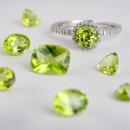
Gem in the Spotlight: Peridot
… for green. Peridot’s color ranges from yellow-green to a warm olive green, and it is distinguished by its soft appearance. Color is the most important characteristic when determining the value of a Peridot gem. The deeper green the …, the higher its value. There is a lot of confusion over the pronunciation of peridot. It is actually pronounced “pear-a-doe” instead of “pear-a-dot” although you will find many, even in the jewelry trade, who use the mispronunciation on …
-
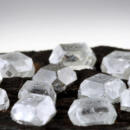
Is a Lab Grown Diamond Right for Me?
Picking a diamond for your engagement ring is a big decision. For most of us, buying a diamond is a significant financial undertaking, and we want to get …prices. P. S. If you are considering a lab grown diamond, be sure to checkout Balance , our own collection of unique engagement rings made exclusively … are conflict free, and you can buy verifiable Canadian diamonds of known origin if you want), it is still reassuring to know that with lab grown diamonds, you can be totally confident that your diamond did not support wars or child labor…
-
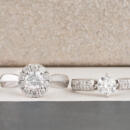
Anatomy of a Ring
…. In fact, like cathedrals, they can even help protect the center stone from damage. If you are shopping for a halo engagement ring, first look for the overall shape of halo that you like (e.g. round, cushion, square, something else), and then …Knowing the different parts of a ring can help you make a better decision when choosing a new ring and it can help you know when your ring may need … ring has a shank. This is the technical term for the band of metal that encircles the finger. There would be no ring without the shank. If the ring has a distinct design feature on the top part, the ring shank is generally said to start …
-
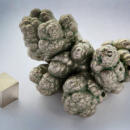
What to Do When Your Ring Irritates Your Skin
Nothing is more frustrating than being unable to wear your engagement ring or other jewelry because it irritates your skin. Don’t worry. There are many options you have when faced with …but their root causes and solutions are very different. Physical Irritation This can be caused by the design of the ring, a rough area that is the result of normal wear and tear, or a ring that is not sized correctly. If the ring is too … irritation and the solution may simply be to size the ring up slightly. Likewise, if there is a rough spot on the ring, that can normally be smoothed out by a jeweler. Changes in diet can dramatically affect our finger sizes. So, if the …
-
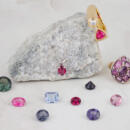
Gem in the Spotlight: Spinel
…hardness of 8 and good toughness spinel is a great choice for all forms of jewelry. We recommend occasional wear for rings and bracelets, but earrings and pendants are suitable for daily wear. Spinel can come in virtually any color of the… guidance systems. It even has the potential to make its way onto our smartphones as a super durable, glass-like covering. History and Lore of Spinel Spinel is arguably the most overlooked and underappreciated gemstone of all time. Spinel…
-
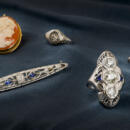
How to Value Inherited Jewelry
…their offer can be significantly lower than even the intrinsic value of a piece. We have even heard of cases where a ring with a one carat diamond and $50 in scrap gold was valued at $50 by these operations. The intrinsic values for the … some of the strongest value to jewelry, but a professional jewelry appraiser has no way of establishing or measuring this value. In the end, it is up to the family to work out a just solution. The desire to have a fair equitable division…
-
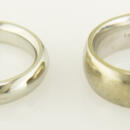
The Difference Between White Gold and Platinum
… its karat. The key to understanding gold karat is the karat value over 24. An example is a 14-karat gold wedding ring. It is 14/24, which equals 58.3% gold and 41.7% alloy. The white color is achieved by a careful choice of the alloying … because if you don’t like the light yellow look of a specific manufacture, then don’t buy it. New white gold rings are usually coated with a hard protective finish of rhodium, a silver-white metal like platinum. The rhodium plating is …
-
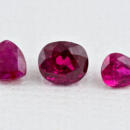
Gem in the Spotlight: Ruby
… believed to protect the wearer from injury and to keep them safe and healthy. Many cultures believed that wearing rubies in battle made warriors invincible and protected them from harm. Innumerable powers have been associated with the … is the most famous ruby, and was originally mined in Myanmar. The Sunrise Ruby was eventually set by Cartier into a ring along with two diamonds weighing a total of 5 carats. In 2015, Sotheby’s put the ring up for auction where it sold …
-
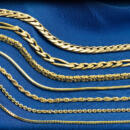
Types of Necklace Chains
… piece of jewelry. But, what kind of chain is best for you? In this article we’ll introduce you to the staggering variety of necklace (and bracelet) chains that are available right now in the jewelry world. Each one has its own unique … and don’t often snag the pendant bail. They are also relatively strong to support the weight of a pendant during daily wear and tear. Larger link cable chains make a good base for charm bracelets. PROS Wearability – The simple design of …